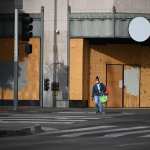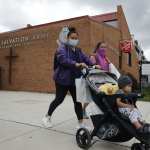In April of 2020, millions of jobs vanished from the labor force. Most of those were held by women.
The shock to the system — more than 12 million jobs gone in the course of weeks — kicked off America’s first women’s recession, what some economists have called the “shecession.” For the first time, women lost jobs at a faster clip than men, particularly in the fields they are overrepresented in — hospitality, retail and education — where the majority of the job loss was concentrated. Mothers felt the strain most of all because many were also contending with a child care crisis that shuttered thousands of day cares and forced many moms to consider whether to keep their jobs or care for their kids. More often than not, the burden of care fell on mothers rather than fathers.
Nearly a year later, that burden continues. Some estimates have found that 1.6 million mothers left the labor force in September alone because of child care needs. Assembly lines are being disrupted because parents need to stay home to care for their children. And women of color continue to suffer higher unemployment rates in part because they are taking on more of the child care.
Ahead of the one-year anniversary of the economic downturn, The 19th plans to tell the stories of the women who left — the mothers who were forced out of the workforce or chose to leave it.
What was that decision like? Are you still out of work or were you successful in finding another job? If you were, was it in a similar position to the one you left or a different one?
Help inform our coverage and possibly have your story featured in The 19th by completing the form below. The deadline to submit responses is March 22.
We also welcome you to reach out to our economy reporter Chabeli Carrazana directly via Twitter or email at [email protected].



